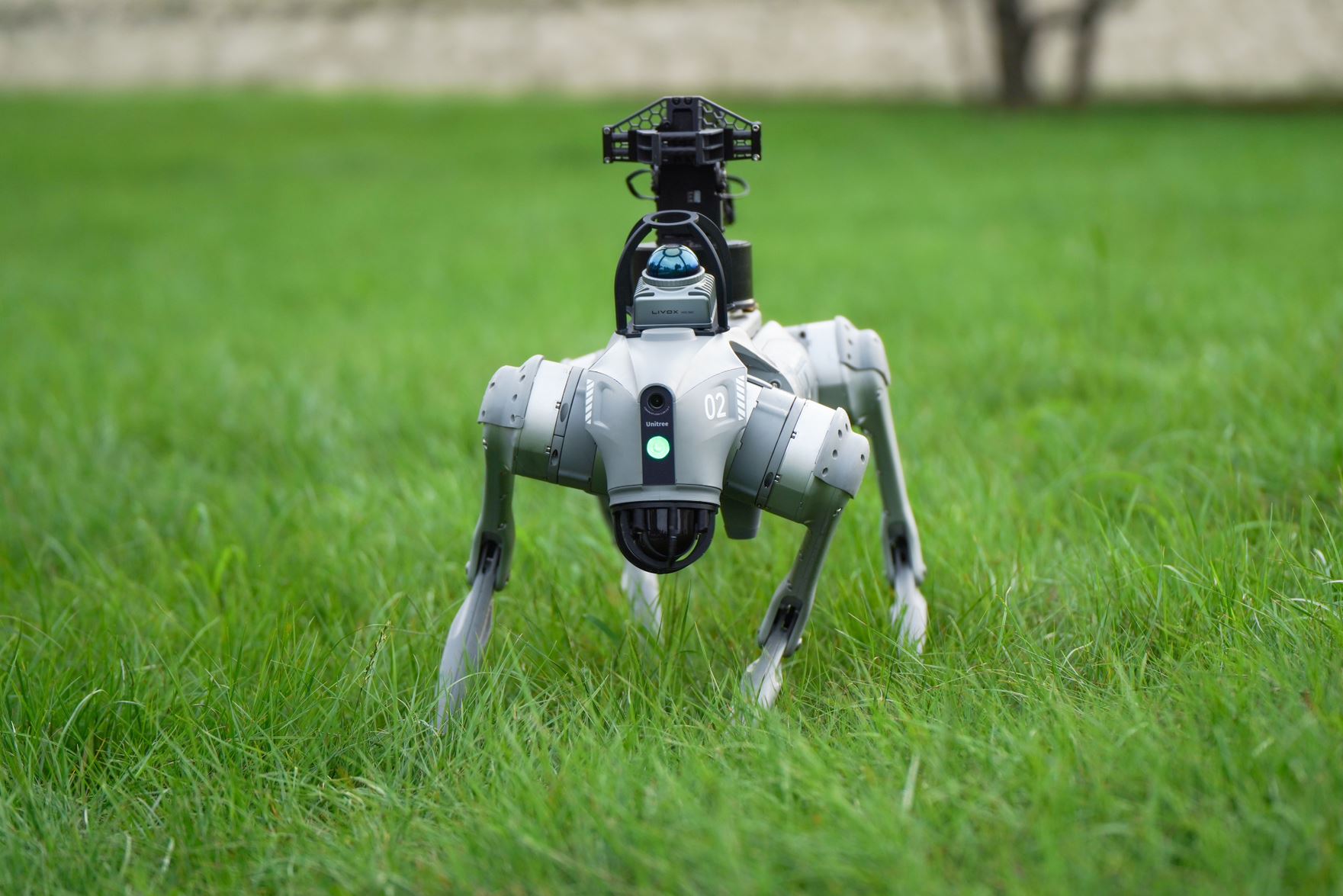
Blog Articles
Innovating Agriculture with Quadruped Robotics
February 21, 2024 — 3 minutes
In the rapidly evolving world of agriculture, technology plays a pivotal role in addressing productivity, sustainability, and efficiency challenges. Among the most innovative advancements are quadruped robots, which are transforming the agricultural landscape and proving to be a valuable educational tool in STEM learning. The Unitree Go2 Quadruped stands out as a prime example of this technological marvel, offering a glimpse into the future of farming while serving as an excellent resource for teaching programming, AI, autonomy, and LiDAR technology.
The Emergence of Quadruped Robots in Agriculture
Agriculture is witnessing a technological renaissance, with quadruped robots at the forefront of this transformation. These agile and versatile machines are designed to assist in various farming tasks, from soil and crop monitoring to planting and weeding, all while minimizing their impact on the soil. Here’s how they’re making a difference:
Equipped with state-of-the-art sensors, quadruped robots can traverse fields to gather critical data on soil conditions, including moisture levels, pH, and temperature. This precise, real-time data collection allows farmers to make informed decisions about irrigation, fertilization, and planting schedules, optimizing resource use and potentially enhancing yields. Advanced imaging technologies enable these robots to inspect crops for signs of disease, pests, or nutrient deficiencies. Early detection through such detailed monitoring facilitates targeted treatment, reducing the reliance on broad-spectrum chemical applications and promoting sustainable farming practices.
Innovations in quadruped robotics have led to the development of robots capable of assisting with planting seeds and weeding with remarkable precision. This reduces the need for manual labor and allows for operations beyond traditional working hours, significantly boosting productivity. Unlike heavy farming machinery, quadruped robots exert minimal pressure on the soil, thus reducing compaction. Soil compaction can hinder root penetration and water infiltration, adversely affecting crop growth. By minimizing this risk, quadruped robots contribute to healthier soil structure and more robust plant development.
Real-world Application: The Vinum Project
Among the most groundbreaking applications of quadruped robotics in agriculture is the Vinum Project, a beacon of innovation tackling the critical challenges of skilled labor shortages and declining grape prices. This initiative represents a significant leap forward in the Agri-Food sector, harnessing robotic solutions to enhance precision and efficiency in vineyard management.
Revolutionizing Vineyard Pruning with Robotics
The Vinum Project’s ambitious goal is to automate the winter pruning of grapevines—a task traditionally demanding a high degree of skill and labor. By deploying quadruped robots equipped with advanced mobile manipulation technologies, the project aims to navigate vineyards with unparalleled accuracy, identify grapevines, and execute precise pruning tasks. This venture into robotic vineyard management utilizes a state-of-the-art architecture and a computer-vision-based navigation system specifically designed for quadruped robots in vineyard settings. The system allows for seamless navigation and operation, even under ideal weather conditions, by generating precise waypoints that optimize the robotic arm’s workspace for effective pruning.
Unitree Go2 Quadruped: Bridging the Gap Between Industry and Education
The Unitree Go2 Quadruped is revolutionizing agricultural practices and reshaping STEM education. Simulating real-world agricultural use cases provides students with hands-on experience in programming, AI, and robotics, preparing them for the challenges and opportunities of the future.
For educators and students alike, the Unitree Go2 is a tangible connection to the cutting-edge technologies shaping our world. It demonstrates the practical applications of AI and autonomy in solving real-world problems, such as increasing agricultural efficiency and promoting sustainability. Moreover, its use in the classroom underscores the importance of lidar technology in precision agriculture, offering students a deep dive into the science behind these innovations.
The Future of Agriculture and STEM Education
As the agricultural sector continues to embrace quadruped robotics, the implications for STEM education are profound. Integrating technologies like the Unitree Go2 Quadruped into learning curriculums ensures that students are not only consumers of technology but also creators, equipped with the knowledge and skills to drive future innovations.
In conclusion, the advent of quadruped robotics in agriculture represents a significant leap towards more efficient, sustainable, and productive farming practices. Simultaneously, tools like the Unitree Go2 Quadruped are invaluable in preparing the next generation of scientists, engineers, and technologists who will continue to push the boundaries of what is possible in agriculture and beyond. As we stand on the brink of this new era, it’s clear that the fusion of technology and education will be key to unlocking the full potential of both fields.
Shop More Products
From classroom-friendly kits to hands-on tools: Explore our hardware, packages, and accessories tailored for the educational journey.